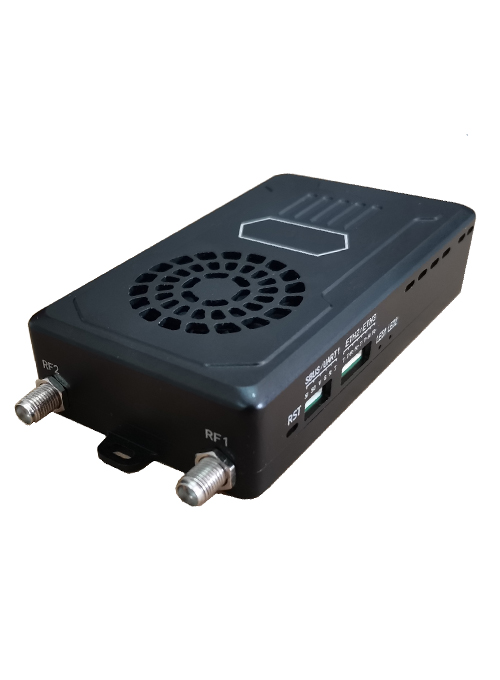
With the increasing demand for high-quality video surveillance, IP-based video surveillance systems have become more popular. One of the essential components of these systems is an IP encoder, which converts analog video signals into digital video streams for transmission over an IP network.
In this article, we will explore the basics of IP encoders, including how they work, their features, and the benefits they offer.
What is an IP Encoder?
An IP encoder, also known as a video encoder or video server, is a device that converts analog video signals into digital video streams. These streams can then be transmitted over an IP network, allowing remote access to live and recorded video.
An IP encoder typically has one or more analog video inputs, such as BNC or RCA connectors, and one or more Ethernet ports for network connectivity. It can be used to convert signals from a variety of sources, including analog CCTV cameras, VCRs, and DVRs.
How does an IP Encoder Work?
An IP encoder works by converting analog video signals into digital video streams. The process involves several steps, including:
- Analog to Digital Conversion: The analog video signal is converted into a digital format using an analog-to-digital converter (ADC).
- Compression: The digital video stream is compressed using a video codec, such as H.264 or MPEG-4, to reduce the bandwidth required for transmission over the network.
- Network Transmission: The compressed digital video stream is transmitted over an IP network using TCP/IP or UDP/IP protocols.
- Decoding: The digital video stream is decoded by a video player or client software, such as a web browser or video management software, to display the video on a monitor or screen.
Features of an IP Encoder
IP encoders come with a variety of features, including:
- Multi-channel Support: Many IP encoders support multiple channels, allowing several analog cameras to be connected and encoded simultaneously.
- Remote Access: IP encoders allow live and recorded video to be accessed remotely, over an IP network, using a web browser or video management software.
- Video Analytics: Some IP encoders come with built-in video analytics capabilities, such as motion detection, tamper detection, and people counting.
- PoE Support: Many IP encoders support Power over Ethernet (PoE), allowing them to receive power and network connectivity over a single Ethernet cable.
Benefits of an IP Encoder
IP encoders offer several benefits, including:
- Easy Integration: IP encoders can be easily integrated into existing analog CCTV systems, allowing users to upgrade to digital video surveillance without replacing their entire system.
- Remote Access: IP encoders allow live and recorded video to be accessed remotely, over an IP network, from anywhere with an internet connection.
- Scalability: IP encoders are highly scalable, allowing users to add additional cameras and encoders as their needs change and grow.
- Cost-effective: IP encoders are often more cost-effective than replacing an entire analog CCTV system with a digital one, especially in situations where existing analog cameras are still functional.
Conclusion
An IP encoder is an essential component of an IP-based video surveillance system. It converts analog video signals into digital video streams for transmission over an IP network, allowing remote access to live and recorded video. IP encoders offer several benefits, including easy integration, remote access, scalability, and cost-effectiveness, making them a popular choice for upgrading analog CCTV systems to digital ones.
An IP encoder, also known as an internet protocol encoder, is a device or software that converts analog video signals into digital IP packets for transmission over an IP network. This technology has become increasingly popular in recent years due to the rise of IP-based video surveillance systems.
IP encoders come in various forms, including standalone hardware devices, software applications, and embedded systems. They work by receiving analog video signals from cameras or other sources and converting them into digital data that can be transmitted over an IP network. The data is typically compressed to reduce bandwidth requirements and storage space.
One of the main advantages of IP encoders is their ability to integrate with existing IP networks. This makes them ideal for use in large-scale video surveillance systems, where multiple cameras need to be connected to a central monitoring station. By using IP encoders, it is possible to transmit high-quality video footage over long distances without the need for expensive coaxial cables or other specialized equipment.
Another benefit ofIP encoder is their flexibility. They can be used with a wide range of cameras and other video sources, making them suitable for a variety of applications. Additionally, many IP encoders offer advanced features such as motion detection, remote viewing, and video analytics, which can help to improve security and make it easier to monitor large areas.
When selecting an IP encoder, it is important to consider factors such as the number of channels, video resolution, compression standards, and connectivity options. It is also essential to ensure that the encoder is compatible with the IP network and video management software being used.
In summary, an IP encoder is a powerful tool for converting analog video signals into digital data that can be transmitted over an IP network. It offers a range of benefits, including integration with existing IP networks, flexibility, and advanced features. As the use of IP-based video surveillance systems continues to grow, the demand for IP encoders is likely to increase as well.
An IP encoder is a device used to convert analog video signals into digital IP (Internet Protocol) streams. These streams can be transmitted over an Ethernet network, making it possible to distribute video content to multiple devices and locations simultaneously.
IP encoders are commonly used in surveillance systems, where they allow security footage to be easily distributed and monitored remotely. They can also be used in broadcasting, live events, and video conferencing, where high-quality video transmission over a network is necessary.
There are different types of IP encoders available, and they can be categorized based on the type of input signal they accept. Some IP encoders are designed to convert standard definition (SD) analog signals, while others are capable of handling high definition (HD) analog signals.
IP encoders typically have multiple input ports, allowing them to receive signals from various sources, such as cameras, DVD players, and set-top boxes. They also usually have built-in software that allows users to configure the encoding settings and manage the network transmission.
One important consideration when using IP encoders is the bandwidth of the network. The video streams generated by the IP encoder can be very large, and if the network is not capable of handling the traffic, the video quality may suffer or the transmission may be interrupted.
To address this issue, some IP encoders include features like bitrate control, which allows users to adjust the amount of data transmitted in the stream. This can help ensure that the video quality remains high while minimizing the impact on the network bandwidth.
In addition to encoding analog video signals, some IP encoders also offer additional features, such as audio encoding, motion detection, and remote access. These features can be particularly useful in surveillance systems, where users need to monitor and manage multiple cameras from a central location.
Overall, IP encoder is a powerful tool for converting analog video signals into digital IP streams that can be easily distributed over a network. Whether for surveillance, broadcasting, or video conferencing, IP encoders can help simplify and streamline the process of transmitting high-quality video content.
Read more about rf video






